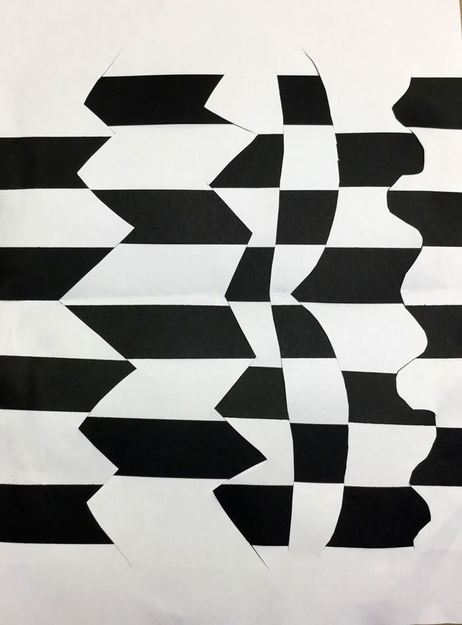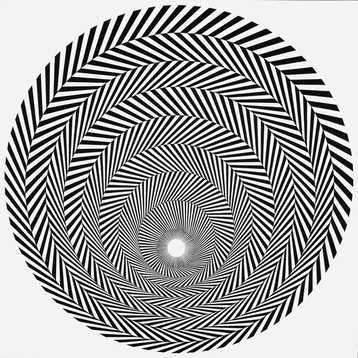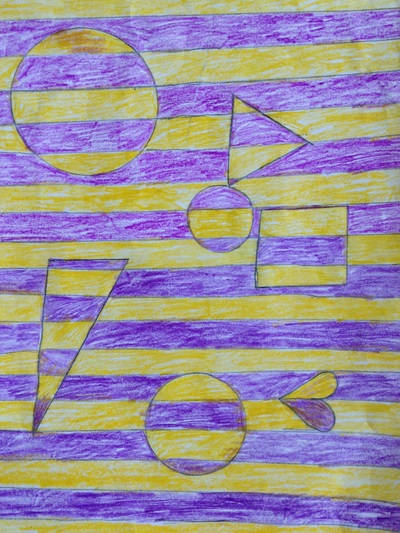|
2nd graders recently learned about the Op artist, Bridget Riley. Ms. Riley is an artist from London who specializes in creating optical illusions in her artwork. Her artwork is usually large-scale because it has a more disorientating effect on the viewer when it is larger. The kids thought her artwork was super cool! They were blown away by the fact that even though the painting wasn't moving, it gave the effect that it was. This Bridget Riley project was different than what I have done in the past. This is a project that I got from my friend, Tasha Newton, over at iartmyjob.wixsite.com !This year, I had students create a weaving inspired by her work.
On day one, I introduced students to her work. Then, they received a white sheet of paper that had been folded in half. They cut 5 crazy lines into it (curly, angled, etc). Then they began to weaving into these oddly cut shapes. The second day, they finished their weaving. Then they chose a black sheet of paper, folded it in half, and cut a geometric shape from it. They glued the black paper with the shape cut out of it on top of their weaving. One class was a day behind the others so they just created the weaving and didn't glue the black paper on top.
0 Comments
2nd graders recently learned about the Op artist, Bridget Riley. Ms. Riley is an artist from London who specializes in creating optical illusions in her artwork. Her artwork is usually large-scale because it has a more disorientating effect on the viewer when it is larger. The kids thought her artwork was super cool! They were blown away by the fact that even though the painting wasn't moving, it gave the effect that it was.The kids started off the project by drawing straight and thin lines using a straight edge. They needed to make sure their lines were parallel or they wouldn't achieve the optical effect. Then they drew at least six geometric shapes. This led to a discussion on the difference between geometric and organic shapes. The next couple classes were spent talking about complementary colors which were used to color their artwork. Complementary colors are colors that are directly across from each other on the color wheel. I usually tell them to remember the Vikings (yellow and purple), Bears (blue and orange), and Christmas (red and green). When coloring, they were to alternate colors for each row.
|
Devon CalvertHarmony and Consolidated Elementary Art Teacher in Milton, WI. UW-Eau Claire graduate. WAEA President. Apple Teacher. Archives
March 2019
Categories
All
|
















 RSS Feed
RSS Feed
